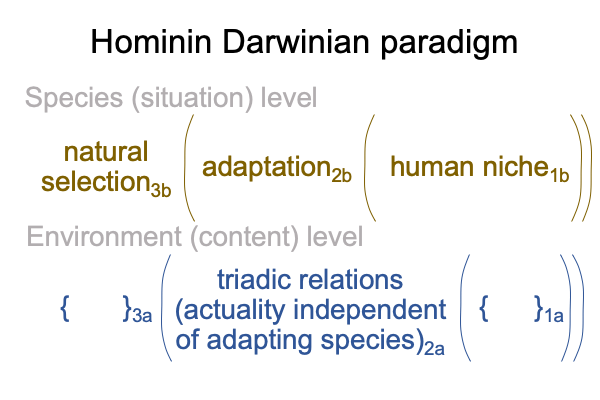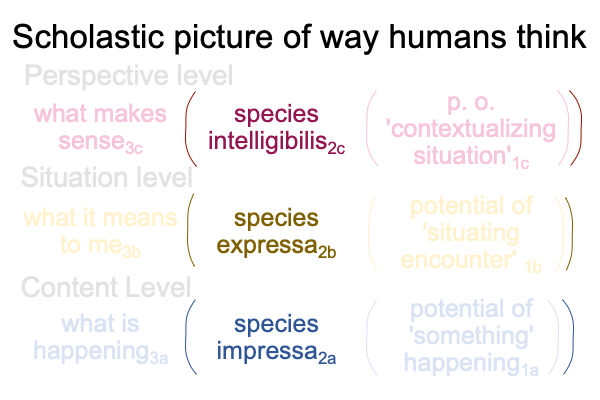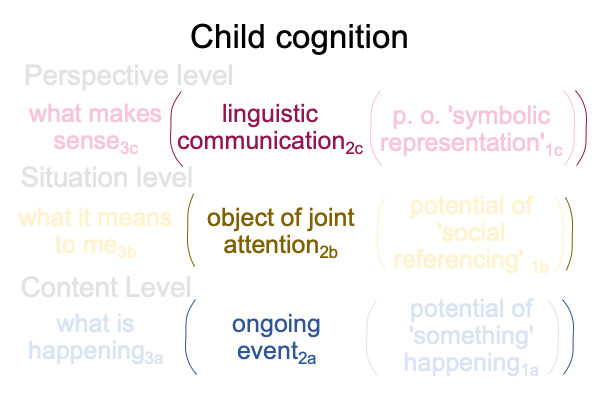0067 The three-level scholastic interscope for how humans think is a purely relational structure.
Are Tomasello, Deely and Dennett discussing the same suite of human adaptations, as pictured in Razie Mah’s foundational construction of the Darwinian paradigm in the masterwork, The Human Niche (available at smashwords and other e-book venues)?
0068 Here is a picture of the Darwinian paradigm for human evolution.

For Tomasello, another term for the human niche1b is “sociogenesis1b“. Joint attention2b is the adaptation2b.
For Deely, human semiosis2b is the adaptation and the niche1b is the potential of sign-processing1b.
For Dennett, meme-usage2b is the adaptation and the niche1b is the potential of the species impressa1b.
0069 Here is a scholastic picture of the way humans think. The actualities are foregrounded, the normal contexts and potentials fade to the background.

Species impressa2a covers impressions, sensations, feelings, qualia and decodings. An ongoing event is the apparent cause of these cognitions2a. Indeed, the event and its species impressa2a cannot be distinguished by a human infant.
Species expressa2b covers perceptions, phantasms, realizations, emotions, and so forth, addressing the question, “What does the content mean to me?”3b.
Species intelligibilis2c, in theory, brings an intelligible aspect of the situation-level actuality into relation with a universal aspect of the content-level actuality. Species intelligibilis2c is a triadic relation experienced holistically as a relationbetween what is and what ought to be. The Latin term for what is is species impressa intelligibilis, a universal aspect of the species impressa2a. The Latin term for what ought to be is species expressa intelligibilis, an intelligible aspect of species expressa2b.
0070 Here is Tomasello’s description of human cognition rendered as a three-level interscope. Again, the actualities are foregrounded.

0071 To me, a comparison of the previous two diagrams supports the claim that modern Tomasello and medieval schoolmen try to fashion keys for the same lock. The lock is a purely relational structure. What enters into each elementdepends on the inquirer.
The scholastics are interested in separating mind-dependent and mind-independent beings, among other goals. This seems to be a far cry from Tomasello’s journey into the natural history of who we are. Yet, these two inquiries have this relational structure in common.
